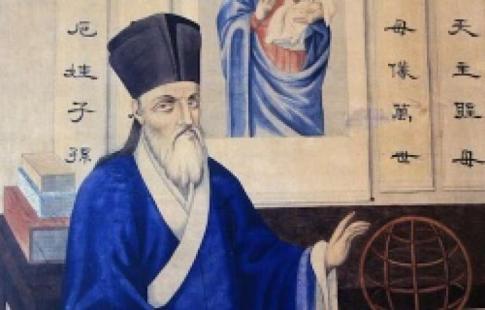Matteo Ricci (1552-1610)

Matteo Ricci was an Italian Jesuit missionary who opened China to evangelization.
Matteo Ricci (1552-1610) was an Italian Jesuit missionary who opened China to evangelization. He was the best-known Jesuit and European in China prior to the 20th century.
Born at Macerata on Oct. 6, 1552, Matteo Ricci went to Rome in 1568 to study law. In 1571 he entered the Society of Jesus. After studying mathematics and geography at a Roman college, he set out for Goa in 1577 and was ordained there in 1580. In 1582 he was dispatched to Macao and started to learn Chinese.
Soon after the Jesuits established themselves at Chaoch'ing west of Canton, Ricci and a fellow Jesuit, Michele Ruggieri, went there on Sept. 10, 1583. When the Chinese governor general ordered the expulsion of the Jesuits in 1589, Ricci managed to acquire a place in Shaochou, north of Kwangtung, where he soon established amicable relations with the officials and with members of the educated elite.
Ricci's ambition, however, was to go to Peking and establish himself in the imperial capital. Early in 1595 he set out to the north but was halted in Nanking, as all foreigners were held under suspicion following the Japanese invasion of Korea; hence he retreated to Nanchang, Kiangsi. In 1598 he found another opportunity to go north when the Nanking minister of rites, Wang Hunghui, expressed willingness to escort him. They reached the gates of Peking but were again turned back due to the Sino-Japanese conflict. Ricci thereafter settled in Nanking, where he received warm welcome from the literate as a result of his broad knowledge of the Western sciences and deep understanding of the Chinese classics.
Ricci and his escort made another effort to go to Peking in 1600, but their entrance was delayed by the intrigue of the eunuch Ma T'ang, who had tried to take possession of the gifts brought for the Ming emperor. Eventually they arrived at the capital on Jan. 24, 1601, and subsequently received a warm welcome from the Emperor. This imperial favor provided Ricci with an opportunity to meet the leading officials and literati in Peking, some of whom later became Christian converts.
Finally, Ricci obtained a settlement with an allowance for subsistence in Peking, after which his reputation among the Chinese increased. Besides the missionary and scientific work, from 1596 on he was also superior of the missions, which in 1605 numbered 17. When he died on May 11, 1610, he was granted a place for burial in Peking. Some of the outstanding Chinese literati with whom Ricci had contact later became his converts, including the famous scholar-officials Hsü Kuang-ch'i, Li Chih-ts'ao, and Yang T'ing-yün. Ricci's writings include about 20 titles, mostly in Chinese, ranging from religious and scientific works to treatises on friendship and local memory. The most famous of these are the Mappamondo (World Map) and the True Idea of God.
Ricci owed his success, apart from his personality and learning, largely to his "accommodation method"—an attempt to harmonize the Christian doctrine with the Chinese tradition, which laid the foundation of the subsequent success of the Roman Catholic Church in China. Though the unhappy rites controversy (ca. 1635-1742) brought the mission to near ruin, the name of Ricci and his work left an indelible imprint on subsequent Chinese history.




 del.icio.us
del.icio.us Digg
Digg

Post your comment